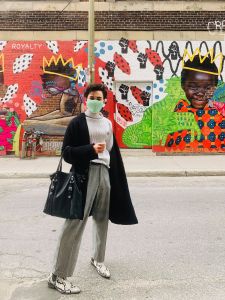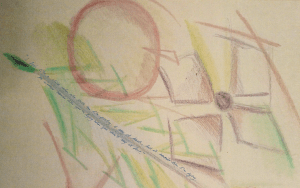Source: Museum of Fine Arts, Boston
The Silent Epidemic: suicide is the single biggest killer of men in the UK. In America, 7 of every 10 suicides are by white males, and in Canada, men kill themselves three times more often than females. As a woman, I am aware that it is not my place to speak on behalf of men about their emotional experiences. But please allow me to bring an emotion to the table, which is rarely touched upon within the vernacular of psychotherapy: shame. Shame must be interrogated in its social and psychological context in order to tackle the ‘silent epidemic’ and ‘crisis of masculinity’ that we are currently seeing in the West.
“Shame is hot and cold at once, tiny and exorbitant at once.” A painful – often burning – experience of regret, inadequacy or dishonour. Shame is an emotion that elicits a sense of unworthiness in the eyes of others, and has more to do with social codes than moral codes. Thus, its power is twofold: firstly, as a form of social manipulation, and second, this shame is then absorbed by the individual and exercised as a self-imposed denigration.
Shame is a powerful emotion, whose very existence necessitates a social context. It involves the perceived and internalised Gaze of society, rather than the actual Gaze necessitated by embarrassment. Etymologically, the word ‘shame’ is believed to have been derived from the root of a word meaning ‘to cover’: the biblical fig-leaf springs to mind, depicting it as the very first emotion felt by mankind. It has hence been used to subordinate people. The shaming of people is peppered throughout literature and history: Nathaniel Hawthorne’s The Scarlet Letter; the Star of David branded on the sleeves of the Jewish community in Nazi Germany; and the socialisation of children through shaming wrong-doings.
Shame is widely considered as relevant to human survival. In evolutionary terms, the emotion of shame is highly useful for the continued existence of the ‘tribe’ – and of the individual themself. Take incest, for example: Babette Rothschild notes that people “have a deep-seated feeling of shame even at the thought of – let alone attempt at – incest.” In this instance, shame would have been selected in order to maintain a wide genepool and to prevent the genetic fragility of inbreeding, thus serving an important biological function.
Our very actions are steered by a need to avoid feeling shame. In conjunction with Ehrsucht – “the longing to be honoured or esteemed by others” – shame is used as a rudder for our actions, according to Kant’s moral philosophy. Building on this, in Hardt and Negri’s philosophy on political economy, Empire, the Multitude are no longer kept in line by the sovereignty of the state, but instead we are shamed into acting ‘morally’ by large transnational corporations and NGOs, such as Amnesty International and the International Committee of the Red Cross. So strong is this emotion that it dictates the lives we lead and constitutes the most effective form of manipulation – more compelling, it would seem, than physical or political coercion.
So, we have established that shame is a powerful biological function, potent to the extent that it can successfully be used as a social tool. It doesn’t elicit reaction, but brings about a certain submission in those who are ashamed. Quite literally, a physical response to the emotion is to look down, or avert the Gaze. For example, women who have spoken out on sexual misconduct have, in the past, been shamed into silence for wearing ‘inviting’ short skirts and low-cut tops. Men are still incessantly shamed for not living up to the masculine ‘ideal’: boys are raised on the “man up” culture, which shames them for showing ‘weakness’. It is ceaselessly used against members of society to the point where it is internalised and used against the self. This results in a tension stemming “from comparison of the self’s action with the self’s standards” – or, therefore, with the ‘ideal’ social standard.
A useful explanation of the tension lies in the emotional bifurcation described by Greenberg & Safran. Primary emotional reactions are viewed as organic responses to stimuli: base feelings of fear, grief, love and so on. Secondary emotional responses are emotions learned in reaction to primary emotions; in other words, “fear of experiencing fear or feelings of anxiety in response to the experience of anger.” This description witnesses a duplication of emotion – and, at that, emotions that are at odds with one another. Data scores distinguish that men feel the stress in this conflicting “layer” of emotions more keenly than women.
These secondary emotional responses are learnt as a result of social norms and expectations. Pan-culturally, there tends to be a stereotype that men are less emotional than women – ‘anger’ being the only socially “acceptable” emotion expressed by men. When measuring emotional arousal, however, there is less difference between the sexes than these stereotypes suggest. Instead, men learn to “adhere to social rules (e.g., ‘boys aren’t supposed to cry’), and thus form cognitive or ideological sets specific to masculine gender roles.” These ideologies form a lens through which primary emotions are viewed and create tension: an angst termed by Eisler & Skidmore as masculine gender role stress. Most importantly, this gender role stress “may become a conditioned response that occurs irrespective of actual negative social feedback.” In other words, regardless of whether the individual is shamed or discriminated against in reality, they have been socially conditioned into laying that criticism on themselves. This is the Gaze of society internalised by the individual, which invokes the weight and condemnation of shame.
“Shame is the worst possible thing that can happen, because shame, in its profoundest meaning, conveys that one is not fit to live in one’s own community.” The emotion elicits a ubiquitous response: the reaction is typically social withdrawal. Feelings of inadequacy or ‘wrongness’ in the (perceived) eyes of the group lead to self-exclusion – and/or self-medication to mask emotion. This would lead men, feeling ashamed due to the unattainability of traditional masculine gender norms, unable to come forward and express any emotional tension or mental health issues.
In the current climate of #MeToo, calling-out, and “naming and shaming” in particular, this isolation is endemic. Not only are men shamed via traditional gender role norms (‘men don’t show weakness’), but they are re-shamed “for being armoured up in the prisons” that society made for them. What I mean by this, is that this narrative of ‘toxic masculinity’ often leaves men feeling shame, not only for their internal human vulnerability, but also for their external ‘armour’, as it were. A double dose of shame, which decries every layer of the male identity. Vocalising this would seem terrifying indeed.
How, then, to deal with shame? Sadness is somewhat alleviated by crying; anger can be expended by shouting; fear, by shaking. But shame cannot be externalised and disbursed in the same way. Babette Rothschild suggests that the key to healing lies in the re-establishing of human connection: “If humans lived in isolation, it is not so likely we would feel shame. It required the presence of others to make its impact. So then it seems reasonable that interaction could be a necessary component for healing.” In other words, shame is a socially constructed emotion, so it ought to be deconstructed in a social manner too. This entails the recognition and understanding of another human being. Without this human acknowledgement, shame cannot dissipate and becomes poisonous and debilitating.
Men need help to overcome any ideas that talking about mental health is shameful. We need to reach out and encourage these conversations. Compassion. Support. The ability to feel vulnerable. Brotherhood. Through dissolving the perceived social Gaze, we can alleviate shame and take a step towards mental wellness. We must all work to dismantle our own internalised social ‘ideals’ in an attempt to end the toxicity of shaming into silence; to end the Silent Epidemic.


















